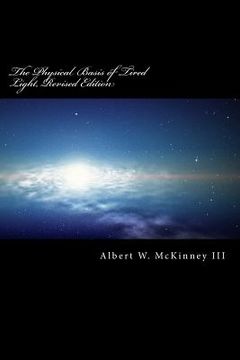Share
The Physical Basis of Tired Light, Revised Edition
Albert W. McKinney III
(Author)
·
Createspace Independent Publishing Platform
· Paperback
The Physical Basis of Tired Light, Revised Edition - McKinney III, Albert W.
Choose the list to add your product or create one New List
✓ Product added successfully to the Wishlist.
Go to My Wishlists
Origin: U.S.A.
(Import costs included in the price)
It will be shipped from our warehouse between
Friday, July 19 and
Friday, July 26.
You will receive it anywhere in United Kingdom between 1 and 3 business days after shipment.
Synopsis "The Physical Basis of Tired Light, Revised Edition"
Over most of the last century, astronomers have collected an amazing amount of information about the stars and galaxies that surround us. This information has proved troublesome, in that it has led to such weird concepts as an expanding universe and the Big Bang. It has also led to the conclusion that the stars in remote galaxies move so fast that gravity cannot hold them together, hence the need for dark matter and/or dark energy. Is our own galaxy, the Milky Way, unique in the universe, in the sense that it does not require dark matter or dark energy to hold it together? That seems absurd. Yet is it reasonable to question the accuracy of such a huge amount of astronomical data? Yes! And it is easy to point to the culprit! It is the redshift z. The main reason that remote stellar velocities seem high is that their redshift values are too high. Many years ago, Fritz Zwicky pointed out that it would seem that light lost energy as it passed through space. This idea was later termed tired light. But Zwicky was unable to explain why that should happen. This book presents a reason that justifies Zwicky's idea. This leads to a formula for calculating a better value of the redshift z. Using data on 84 clusters published in 1972 by Allan Sandage, this formula reduced their redshift values to near zero amounts, except for very distant star clusters. The author asserts that these results confirm the reasonableness of the formula.
- 0% (0)
- 0% (0)
- 0% (0)
- 0% (0)
- 0% (0)
All books in our catalog are Original.
The book is written in English.
The binding of this edition is Paperback.
✓ Producto agregado correctamente al carro, Ir a Pagar.

